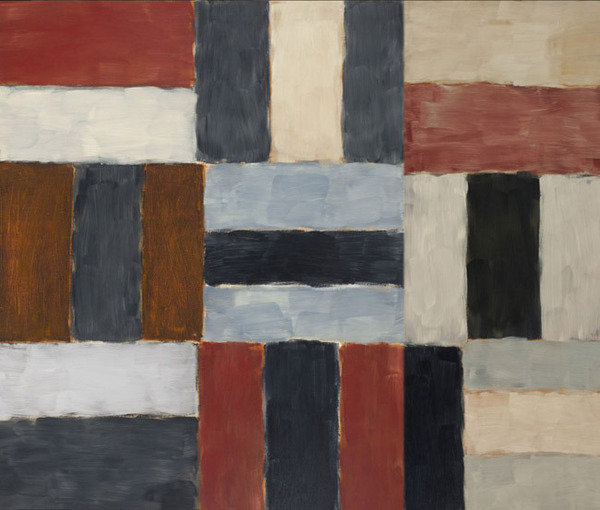Sean Scully
dal 27/7/2012 al 31/1/2013
Segnalato da
27/7/2012
Sean Scully
Philadelphia Museum of Art, Philadelphia
The Museum features two significant recent acquisitions by the artist: Chelsea Wall n.1 (1999) and the monumental triptych Iona (2004-06). Both are characterized by the artist's preference for simple compositional structures and the sensitivity to the interaction of color and light that have long been hallmarks of his work.

On July 28, 2012, the Philadelphia Museum of Art will place on view two significant recent acquisitions by the artist Sean Scully (American, born Ireland 1945): Chelsea Wall #1 (1999) and the monumental triptych Iona (2004-06). These works will be seen with Scully’s Wall of Light Heat (2001) and 12 Small Mirrors (2010), both on loan from private collections. The exhibition of Scully’s paintings is part of the Museum’s ongoing Notations series.
“With Chelsea Wall #1, a gift of John J. Hannan, and Iona, a gift of Alan and Ellen Meckler, and the gift of the beautiful suite of ten color aquatints entitled Etchings for Federico García Lorca (2003) from the artist himself, the Museum’s collection is now able to represent Sean Scully’s work in considerable depth,” states Timothy Rub, the Museum’s George D. Widener Director and Chief Executive Officer. “These two paintings rank among the artist’s finest achievements, and we are delighted to be able to place them on view so that our visitors may experience firsthand Scully’s subtle and imaginative use of color and his remarkable ability, through the intuitive calibration of scale and proportion, to create compositions that are balanced and harmonious and, at the same time, dynamic and full of movement.”
While reflecting the new directions that Scully’s work has taken over the past decade, both Chelsea Wall #1 and Iona are characterized by the artist’s preference for simple compositional structures and the sensitivity to the interaction of color and light that have long been hallmarks of his work. Since the late 1960s, Scully has made paintings that speak to the history of abstraction, engaging in a complex dialogue with the legacies of Abstract Expressionism and Minimalism, while offering new models for the continuing vitality and relevance of non-figurative art. The artist’s basic motif is rectangular blocks of color arranged horizontally and vertically in elegant, variously interlocking configurations often rendered in different scales, from the intimate to the monumental, and enriched by expressive brushwork.
Notations, the ongoing series of gallery installations, was named after the 1968 book by American composer, writer, and visual artist John Cage, who was widely celebrated for his experimental approach to the arts. Cage’s Notations was an international and interdisciplinary anthology of scores by avant-garde musicians, with contributions from visual artists and writers. At the same time, it was an exhibition in book form, in which the scores doubled as drawings. The Notations series at the Philadelphia Museum of Art serves as a flexible tool to explore contemporary art in its different manifestations.
This fall, the Museum will be celebrating the work of John Cage, presenting the exhibition Dancing around the Bride: John Cage, Merce Cunningham, Jasper Johns, Robert Rauschenberg, and Marcel Duchamp (October 30, 2012 - January 21, 2013) and participating in a festival celebrating the John Cage centennial.
Image: Chelsea Wall #1, 1999. Oil on canvas, 110 x 132 inches (279 x 336 cm) © Artists Rights Society (ARS), New York / IVARO, Ireland
Inquiries:
Gigi Lamm
Senior Press Officer
Kristina Garcia
Press Officer
pressroom@philamuseum.org
(215) 684-7860
Philadelphia Museum of Art
Benjamin Franklin Parkway at 26th Street - Philadelphia, PA 19130
Tuesday through Sunday: 10:00 a.m.–5:00 p.m.
Friday evenings: Closed
General Admission:
Members: Free at all times
Adults: $16
Seniors (ages 65 & over): $14
Students (with valid ID): $12
Children (excluding groups)
ages 13–18: $12
ages 12 & under: Free



